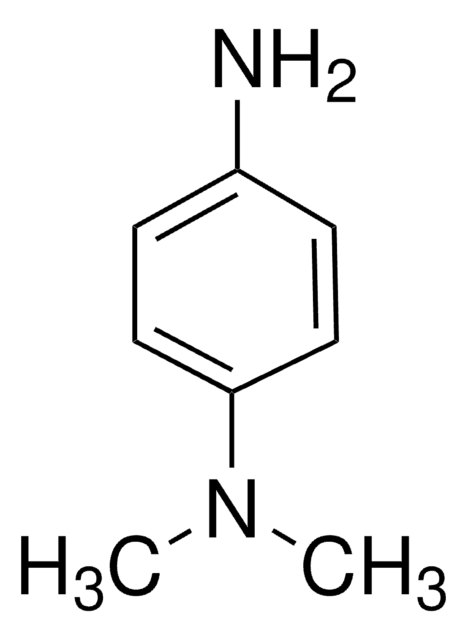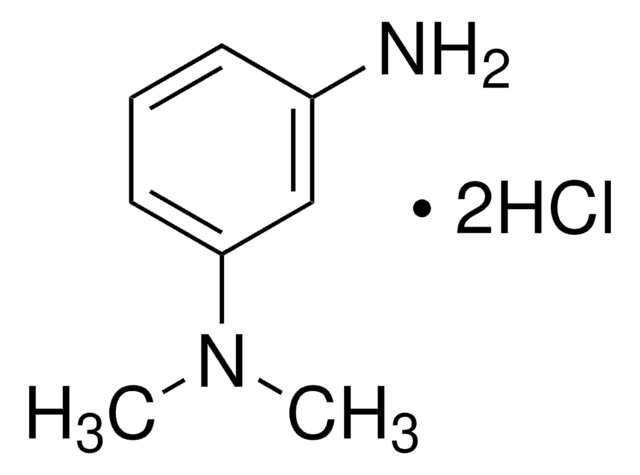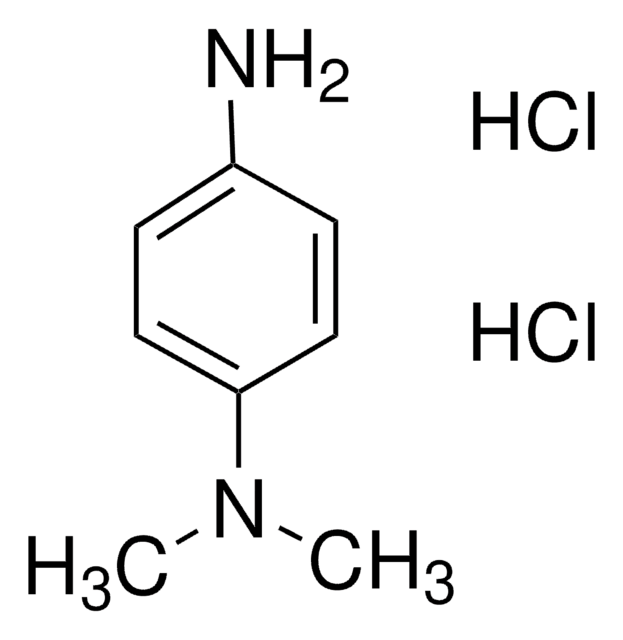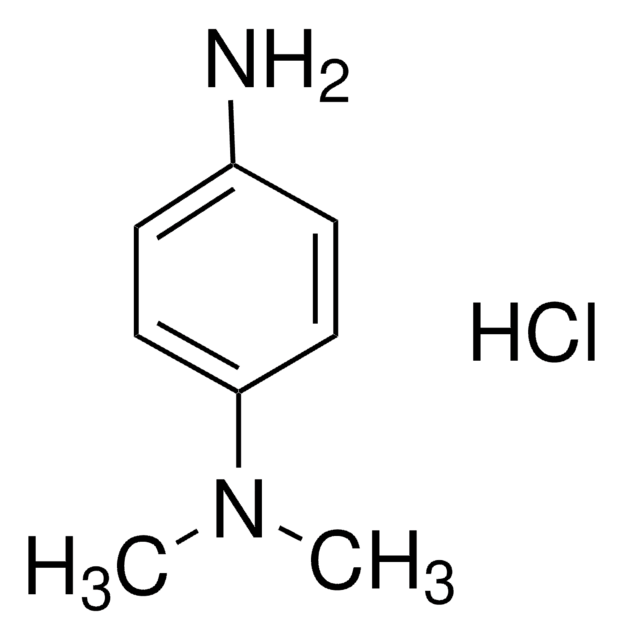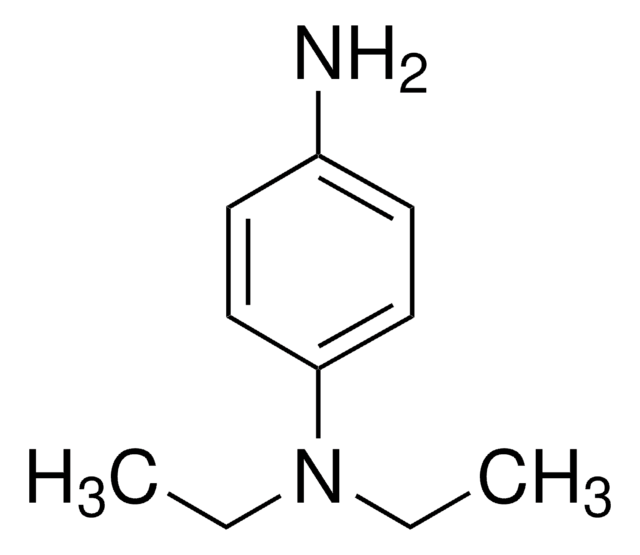219223
N,N-Dimethyl-1,3-phenylenediamine dihydrochloride
99%
Synonym(s):
3-(Dimethylamino)aniline dihydrochloride, 3-Amino-N,N-dimethylaniline dihydrochloride, N,N-Dimethyl-m-phenylenediamine dihydrochloride
About This Item
Recommended Products
Assay
99%
mp
217 °C (dec.) (lit.)
solubility
water: soluble 100mg/2ml, clear to slightly hazy (faintly yellow to tan to purple)
functional group
amine
SMILES string
Cl.Cl.CN(C)c1cccc(N)c1
InChI
1S/C8H12N2.2ClH/c1-10(2)8-5-3-4-7(9)6-8;;/h3-6H,9H2,1-2H3;2*1H
InChI key
BZJPIQKDEGXVFG-UHFFFAOYSA-N
Looking for similar products? Visit Product Comparison Guide
Application
Signal Word
Danger
Hazard Statements
Precautionary Statements
Hazard Classifications
Acute Tox. 3 Oral - Eye Irrit. 2 - Skin Irrit. 2 - Skin Sens. 1 - STOT SE 3
Target Organs
Respiratory system
Storage Class Code
6.1C - Combustible acute toxic Cat.3 / toxic compounds or compounds which causing chronic effects
WGK
WGK 3
Flash Point(F)
Not applicable
Flash Point(C)
Not applicable
Personal Protective Equipment
Choose from one of the most recent versions:
Already Own This Product?
Find documentation for the products that you have recently purchased in the Document Library.
Our team of scientists has experience in all areas of research including Life Science, Material Science, Chemical Synthesis, Chromatography, Analytical and many others.
Contact Technical Service